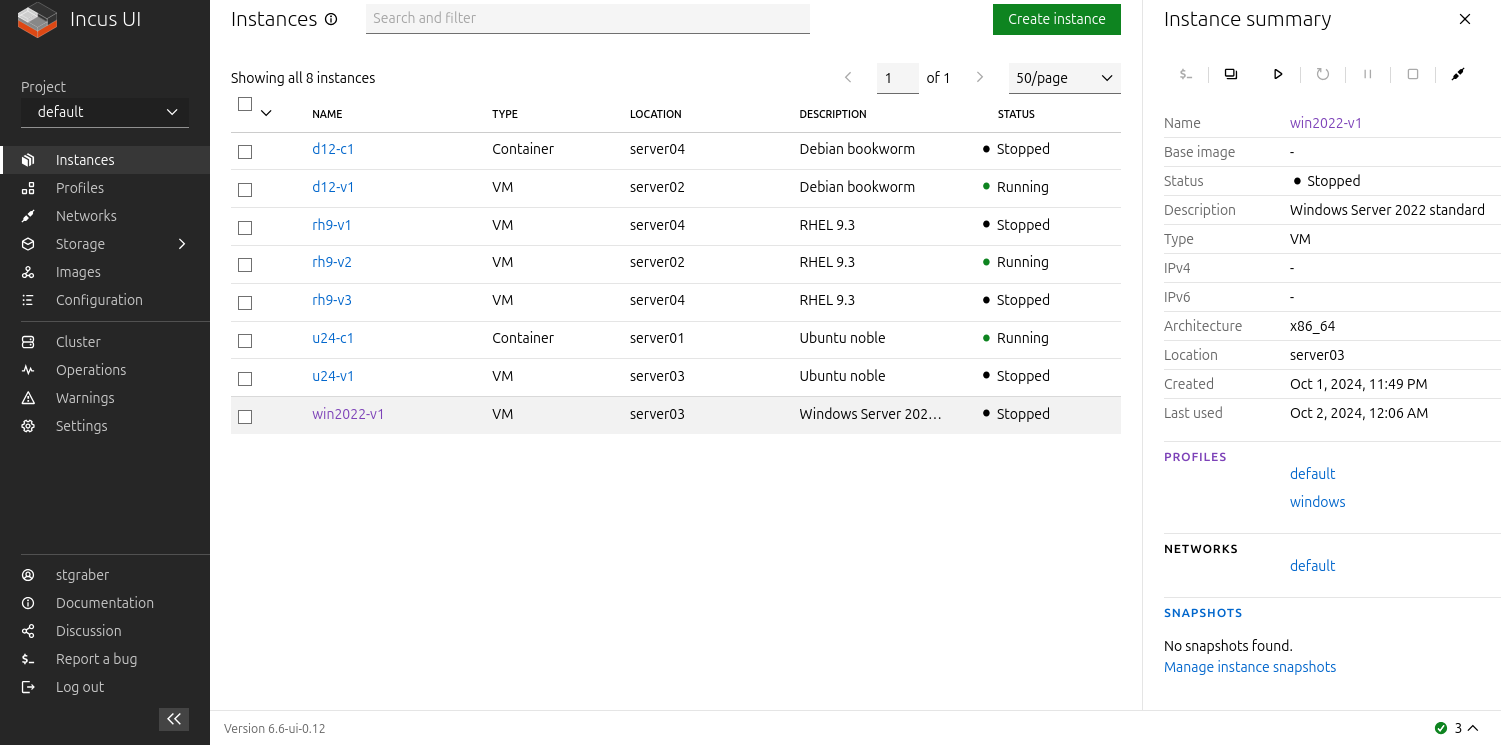Overview
FuturFusion Cloud is a turn-key open-source private cloud solution.
It’s based on the Incus hypervisor
, providing you with a
very modern hypervisor, capable of running a mix of virtual machines,
application containers and system containers across clusters of servers.

It supports a variety of storage options, from existing Fiber Channel,
NVMEoTCP or iSCSI SANs, to local storage or even software defined
storage through Ceph.
On the networking front, you can either rely on traditional physical
networking (dedicated interfaces, VLANs, …) or go for software defined networking with OVN.
It’s strongly focused on modern cloud operations, with infrastructure as code tooling front and center.
It provides a robust REST API as well as integration with common toolling like Terraform and Ansible.
But there is more than just the hypervisor itself, FuturFusion Cloud is made of 3 core components:
- FuturFusion Cloud - Hypervisor OS
- FuturFusion Cloud - Operations Center
- FuturFusion Cloud - Migration Manager

FuturFusion Cloud provides you with an easy to manage, highly available, open source based private cloud.
Hypervisor OS
The Hypervisor OS is our own minimal Linux based operating system.
It comes with just what’s needed to get Incus and related services up and running.
To keep it secure and easy to manage, the OS image is completely immutable, gets provisioned centrally and is managed through an API.
Local storage is TPM encrypted and the entire boot sequence and system integrity is TPM measured.
Concretely this provides you with:
- A very small OS image that can easily be written to any server
- Central provisioning and updates through the Operations Center
- Trusted environment (Secure Boot, TPM encrypted storage & measured boot)
- Reliable updates (A/B update mechanism, automated roll-back on failure)
Operations Center
The Operations Center is your central overview of your FuturFusion Cloud deployment.
It fullfills four main roles:
- Acts as the registration point for all servers running the Hypervisor OS
- Handles update tracking and rollout across the entire cloud
- Provisions new Incus clusters
- Keeps track of resources across all clusters
Most cloud users will interact with the Operations Center to track their
own cloud usage and see what workloads they have on what cluster.
The operations center is designed with security in mind, it only holds
the minimum amount of permissions needed to perform its job and isn’t
capable of directly controlling any of the clusters that it tracks.
Migration Manager
The Migration Manager is how you’ll be migrating your existing workloads over to our cloud.
It’s a central appliance which on one hand connects to a source cloud platform
(currently VMWare vCenter Server) and on the other, connects to a set of Incus clusters.
Once connected, it will maintain an inventory of all instances on the
source cloud, allow the user to annotate those, perform some test migrations
and handle scheduling of all migrations across defined time slots.
Incremental data transfer is supported to limit the amount of downtime
during a migration and post-migration tasks such as injecting missing
drivers, re-configuring storage, … will be performed automatically
based on the detected OS.
On the networking side of things, it supports pulling and replicating
detailed network configurations as well as setting up tunnels so that
instances can be moved without needing re-addressing.




